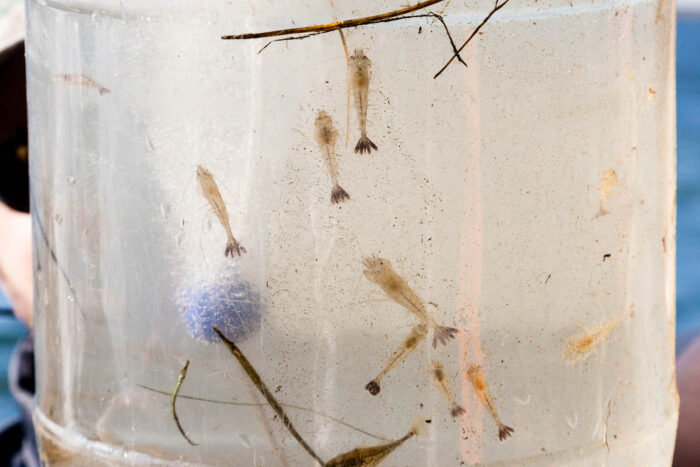Common grass shrimp
Palaemonetes pugio
The common grass shrimp has a delicate, nearly transparent body with a distinctive serrated “horn” over the eyes. It lives in shallow waters throughout the Chesapeake Bay and its rivers.

